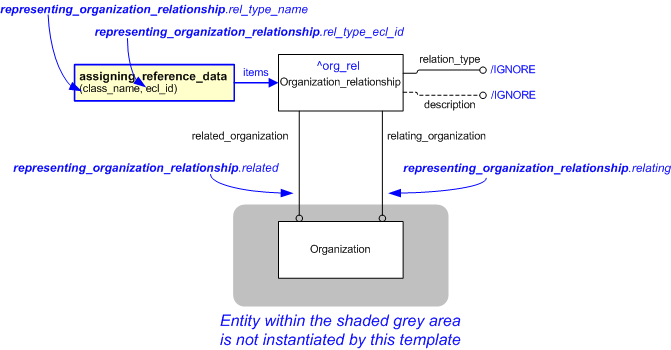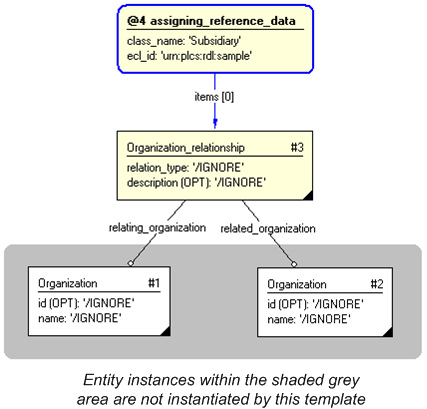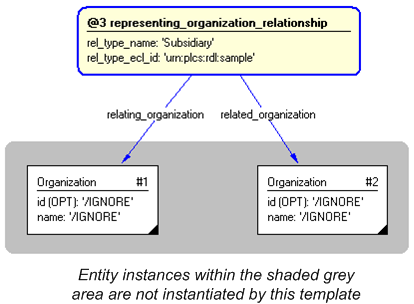Template:— representing_organization_relationship (repr_org_rel)
Capability:assigning_organization |
Date: 2011/04/26 13:38:54
Revision: 1.3
|
This section specifies the template representing_organization_relationship.
NOTE
The template has been defined in the context of the capability
assigning_organization
which provides an overall description of the
relevant parts of the ISO 10303-239 information model and a description
of related templates.
NOTE
An explanation of a template and the associated instantiation path is
provided in the
Template overview
section.
This template describes how to represent a relationship between two organizations.
The EXPRESS-G diagram in
Figure
1
shows the templates and EXPRESS entities that are required
to represent the template
"representing_organization_relationship".
The text highlighted in blue shows the template parameters.
Figure 1 — An EXPRESS-G representation of the Information model for representing_organization_relationship
The graphic for the template to be used in other EXPRESS-G diagrams
is shown in Figure
2
below.
Figure 2 — The graphical representation of the representing_organization_relationship template
The following input parameters are defined for this template:
The relating organization.
The organization that is being related.
The name of the class being used to classify the
Organization_relationship .
This provides the role or reason for the relationship.
The following classes and their sub-classes can be used:
The identifier of the
External_class_library
storing the definition of the class referenced by the parameter @rel_type_name.
The following reference parameters are defined for this template:
%^target = $representing_organization_relationship.org_rel%
The following parameter combinations specify a uniqueness constraint:
Unique constraint: Organization relationship
The instantiation path shown below specifies the entities that are to be
instantiated by the template.
A description of templates and the syntax for the instantiation path is
provided in the
Templates Help/Information section.
The following entities are instantiated with attributes as specified:
The instance diagram in Figure
3
shows an example of the EXPRESS entities and templates that are instantiated by the template:
/representing_organization_relationship(relating='#1', related='#2', rel_type_name='Subsidiary', rel_type_ecl_id='urn:plcs:rdl:sample')/
(an illustration of the consolidated representing_organization_relationship template is shown in
Figure
4 below.)
Figure 3 — Entities instantiated by representing_organization_relationship template
The instance model in STEP ASCII exchange file format (ISO 10303 Part
21 syntax) is:
#1 = ORGANIZATION('/IGNORE','/IGNORE');
#2 = ORGANIZATION('/IGNORE','/IGNORE');
#3 = ORGANIZATION_RELATIONSHIP('/IGNORE','/IGNORE',#1,#2);
#5 = CLASSIFICATION_ASSIGNMENT(#6,(#3),'/IGNORE');
#6 = EXTERNAL_CLASS('/NULL','Subsidiary','/IGNORE',#7);
#7 = EXTERNAL_CLASS_LIBRARY('urn:plcs:rdl:sample','/IGNORE');
The instance diagram in
Figure
4
shows the graphic symbol for the template that is to be
used in other instance diagrams. The example template is:
/representing_organization_relationship(relating='#1', related='#2', rel_type_name='Subsidiary', rel_type_ecl_id='urn:plcs:rdl:sample')/
Figure 4 — Instantiation of representing_organization_relationship template
Characterizations
No common characterizations of the template
representing_organization_relationship
have been identified. However, the ISO 10303-239 EXPRESS model
may enable other assignments to the entities instantiated by the template.




